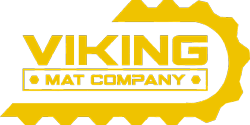THE FUTURE OF THE OIL INDUSTRY: MATS STAND READY
The Oil Industry on a Global Scale
The oil industry is picking up its pace in terms exploration. According to a Reuters report in early July, investments in finding new oil, whether it’s onshore or offshore, will hit an all-time high by 2017 – accounting for $1 trillion in spending, a statistic provided by financial services company Barclays.
But exactly what’s behind the spending boost? Oil discoveries haven’t exactly been too plentiful in recent years with Reuters noting that development in new oilfields are at their lowest since 1999. A change of pace in terms of exploration investment, however, seeks to change the picture. Will the investment boost lead to the discovery of new reserves? Only time will tell.
Midwest Oil Boom Continues
There is, however, better industry news to report in the upper Midwest of the United States. North Dakota is currently experiencing what could be considered an oil boom for onshore drilling – something that pretty much began with the discovery of a high quality oil field in the town of Parshall, North Dakota back in 2006. Only after 3 years after the boom began, oil production from North Dakota had doubled, according to the Wall Street Journal.
Meanwhile, the boom has also delivered what’s most important to state citizens – the economic benefit of jobs – jobs that helped drop North Dakota’s unemployment rate to just 3.5% in 2011, NPR noted via a report. North Dakota’s oil industry also shows no signs of slowing down.
How Do Oilfield Mats Fit the Puzzle?
Oil will remain a critical natural resource for the foreseeable future, a notion that’s only backed by record spending in oil exploration. But other forms of energy are becoming just as relevant. It’s estimated that shale gas, another natural resource, is expected to cover 46% of the U.S.’s supply of natural gas by the year 2035, according to statistics released by the Energy Information Administration. But no matter what energy source is being harvested, one thing remains constant: mats can help workers access remote locations – including wetlands and other rough terrains in a manner that’s both environmentally friendly and efficient.
